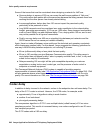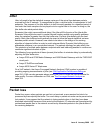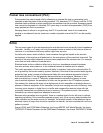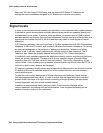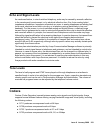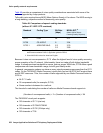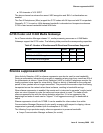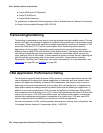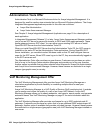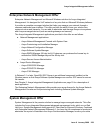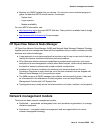
Voice quality network requirements
254 Avaya Application Solutions IP Telephony Deployment Guide
● Avaya 4600 series IP Telephone
● Avaya IP SoftPhone
● Avaya Media Gateways
For procedures to administer QoS parameters, refer to Administration for Network Connectivity
for Avaya Communication Manager (555-233-504).
Transcoding/tandeming
Transcoding or tandeming occurs when a voice signal passes through multiple codecs. This can
be the case when call coverage is applied on a branch office system back to a centralized voice
mail system. These calls might experience multiple transcodings including, for example, G.729
across the WAN and G.723.1 into the voice mailbox. Each transcoding action results in
degradation of voice quality. Transcoding can be minimized by using the Communication
Manager feature called DCS with Rerouting (Path Replacement). This feature detects that the
call coming through the main switch has been routed from one tandem switch, through the
main, and back out to a third switch. In these cases the system re-routes the call, replacing the
path through the main system with a more direct connection. Avaya products minimize
transcoding. "Shuffling" and "hairpinning" also reduce transcoding. For more information, see
Hairpinning
on page 201 and Shuffling on page 201.
CNA Application Performance Rating
The Avaya Converged Network Analyzer (CNA) system is a network optimization solution that
can be configured to improve the Internet experience of customers and local network users,
improve the speed and reliability of Internet VPN connections, and optimize cost of service.
Reporting on low level measurements, such as delay, jitter, and packet loss, is important and
helps predict trends and debug networking related issues that are affecting an application. In
addition to low level measurements, CNA provides an Application Performance Rating (APR)
that translates low level statistics in to a 0 to 5 metric that summarizes the effect of all low level
scores into one score. This APR score allows users, by looking at one number, to determine
whether their application performance is acceptable at any given time. CNA also uses APR
scores to derive network availability from the point of view of the application.
For more information on CNA, including system requirements, licensing, and configuration, see
Converged Network Analyzer Fundamentals Guide, 14-601298.



